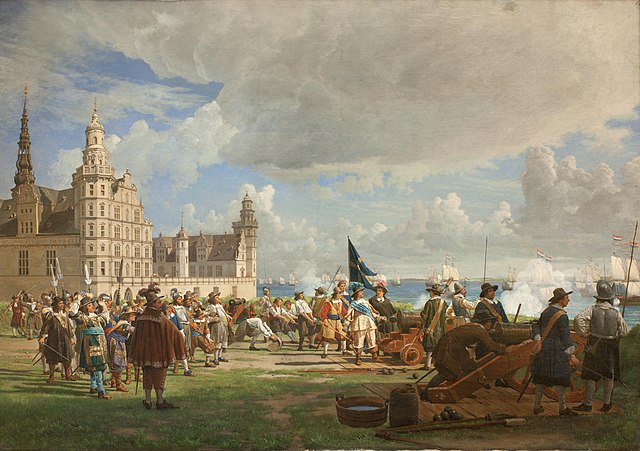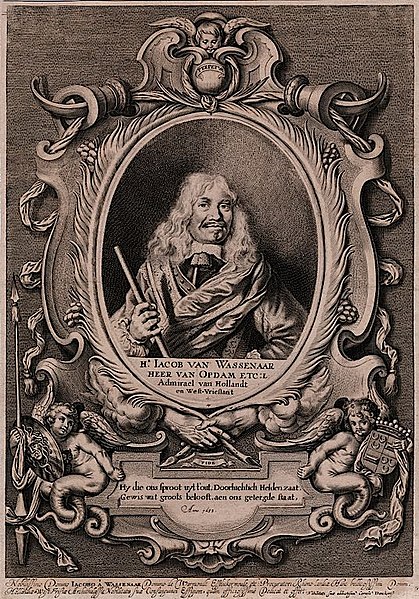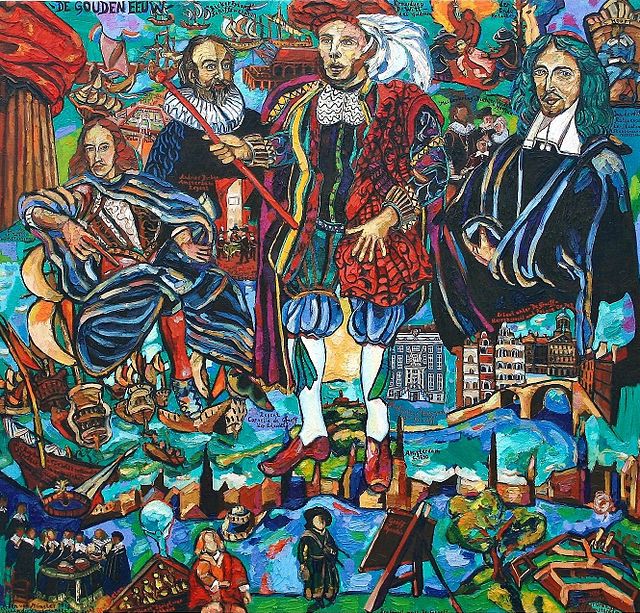Jacob van Wassenaer Obdam
Jacob, Banner Lord of Wassenaer, Lord Obdam, Hensbroek, Spanbroek, Opmeer, Zuidwijk and Kernhem was a Dutch nobleman who became lieutenant admiral, and supreme commander of the navy of the Dutch Republic. The name Obdam was then also spelled as Opdam. British contemporaneous sources typically refer to him as Admiral Opdam or Lord Obdam because it was not until 1657 that he bought the Wassenaar Estate from relatives and thus acquired its title. Modern Dutch sources sometimes less correctly insert a second "van" between "Wassenaer" and "Obdam" or use the modern spelling "Wassenaar".
Baron Jacob van Wassenaer Obdam
Cenotaph of Jacob van Wassenaer by Bartholomeus Eggers, St James Church, The Hague
The Dutch fleet, led by admiral Obdam, enters the Sound on October 29, 1658
Michiel Mozyn, Portrait of Jacob van Wassenaar, 1653, engraving
Johan de Witt, Lord of Zuid- en Noord-Linschoten, Snelrewaard, Hekendorp en IJsselvere, was a Dutch statesman and a major political figure in the Dutch Republic in the mid-17th century, the First Stadtholderless Period, when its flourishing sea trade in a period of global colonisation made the republic a leading European trading and seafaring power – now commonly referred to as the Dutch Golden Age. De Witt was elected Grand pensionary of Holland, and together with his uncle Cornelis de Graeff, he controlled the Dutch political system from around 1650 until the Rampjaar of 1672. This progressive cooperation between the two statesmen, and the consequent support of Amsterdam under the rule of De Graeff, was an important political axis that organized the political system within the republic.
Portrait from the studio of Adriaen Hanneman, 1652
Wendela Bicker
Portrait of Johan de Witt (after Jan de Baen)
Historical-allegorical painting "De Gouden eeuw" about the De Graeff family of the Dutch Golden Age. The painting shows the protagonists around the Amsterdam regent Cornelis de Graeff (middle) and his relatives Johan de Witt (right), Cornelis de Witt (left) and Andries Bicker (second from left) as well as some events from this decade. (Painting by Matthias Laurenz Gräff, 2007)








